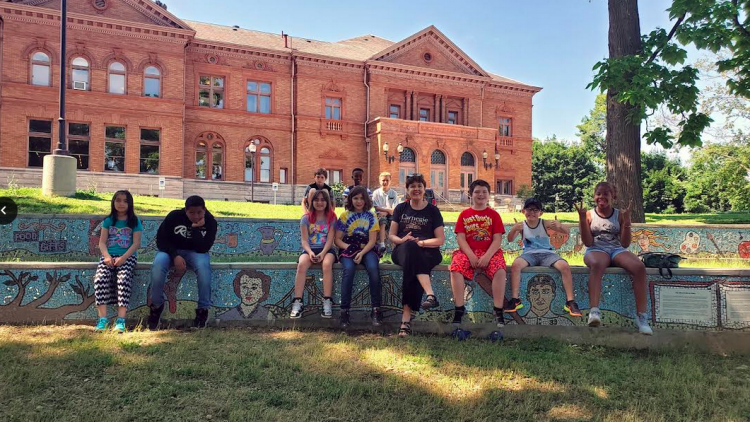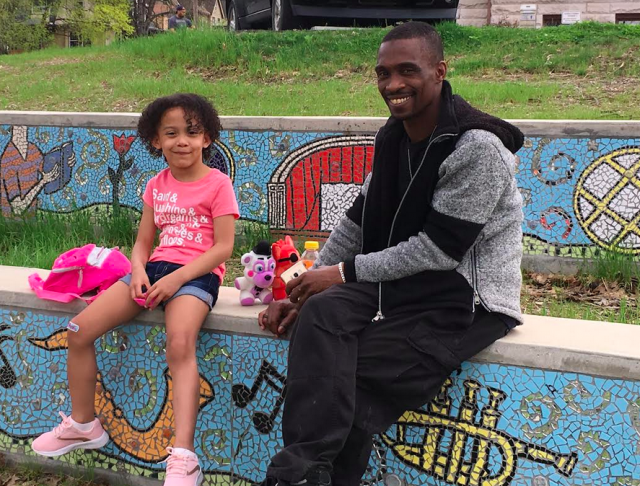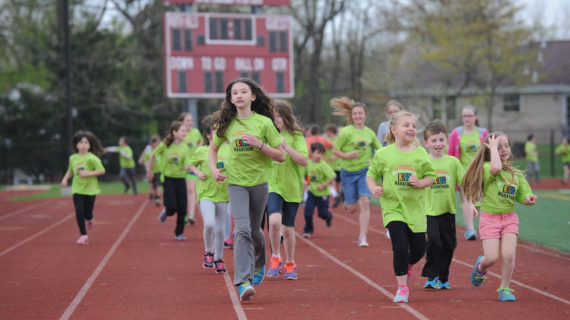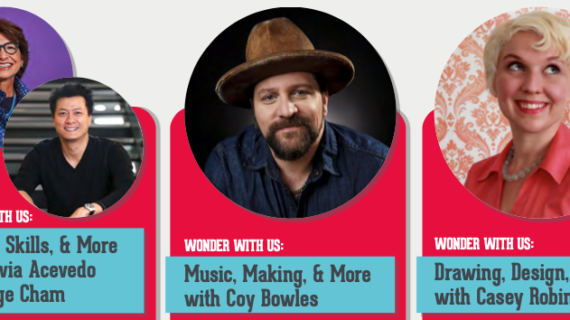
Carnegie’s Library Park is now open: Here’s why you should visit
Photo above of the mural at Library Park in Carnegie courtesy of Andrew Carnegie Free Library & Music Hall. This article first appeared at NEXTpittsburgh.com, a media partner of Kidsburgh. Sign up here for NEXTpittsburgh’s free newsletter filled with all the latest news about the people driving change in our city and the innovative and cool things happening here.
Floods, mudslides, catastrophic fires, Hurricane Ivan — Carnegie has been through a lot of pain in the past few decades. But the borough keeps coming back: “Carnegie is a very, very resilient town,” explains Maggie Forbes, executive director of the Andrew Carnegie Free Library & Music Hall.
And now, with the construction of the new Library Park on its grounds, the “Carnegie Carnegie” is ready to become the community hub it was always meant to be. This past Saturday, the borough celebrated the opening of Library Park, which connects the library with Carnegie’s main business district — and provides it with important green space that it has long been missing.
Perched on a hill overlooking Carnegie, the library was built in 1892, a year and a half after the Homestead strike when Andrew Carnegie’s reputation was at a low point. The building has long loomed over the neighborhood but seemed disconnected. You had to climb a steep staircase to get there from Carnegie’s downtown, and densely-wooded hillsides partially obscured it from view.
Now, after an arduous $2 million makeover, Library Park opens up the front entrance with a long green lawn, screened by 25 new trees, with a serpentine pathway meandering through it, reducing the slope of the three-minute walk. LaQuatra Bonci Associates designed the park and the project’s construction manager was Landau Building Company.
There are pleasant places to sit and gather. There’s also a massive mosaic mural designed by artist Laura Jean McLaughlin and built with the help of more than 200 local volunteers.
“I have to say it looks so urban and almost European in the sense of the green space with park benches along the way and the lighting,” says Forbes. “The staircase is not going to be ‘the staircase to nowhere.’ I think it will become a Carnegie thing — people will meet up there, eat lunch there, hang out there.”
Funding came from donations from residents, organizations and foundations.

The library itself is a beautiful building, filled with surprises. Its striking Italianate facade is modeled after the renowned Carnegie Hall in New York City, one of the most famous and acoustically superb venues in the world.
It contains the Captain Thomas Espy Post of the Grand Army of the Republic (GAR), a room — now a museum — created to honor Union veterans after the Civil War. When the last veteran died, the room was locked and left undisturbed for 50 years. It houses invaluable Civil War artifacts and historical records.
The future of Carnegie looks bright from where Forbes is sitting, in the library atop the hill.
“I think it will help position Carnegie as one of the region’s more attractive destination communities,” says Forbes. “I honestly do. We had a Washington Post reporter come to do a story on our Civil War room, who wrote that our picture-perfect Main Street looks like it’s been lifted from a model railroad.”





